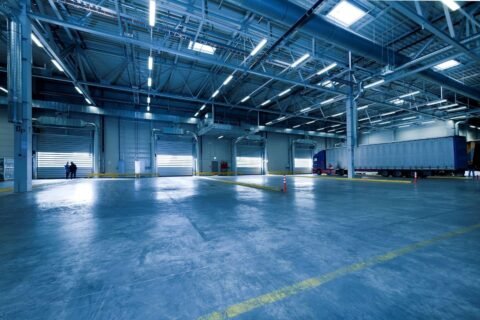Photo by Microsoft Edge on Unsplash
While all jobs have at least a tiny amount of risk, today let’s take a look at jobs that require a continuous evaluation of the hazards related to them, since they represent a higher occupational risk.
Various factors increase the danger in certain work activities such as exposure to extreme environments, hazardous materials, height, or the possibility of facing violent situations. Knowing and understanding these factors is essential to create prevention measures and guarantee the integrity of workers.
The 10 Most Dangerous Jobs
Among the job functions with the greatest exposure to dangers, we can highlight the following:
1. Commercial pilots
Commercial pilots are exposed to a set of considerable challenges, such as adverse weather conditions, mechanical failures, and fatigue from long hours of flight, among others.
Although modern technology has allowed some functions in the aviation area to be optimized, the risks inherent to this job remain. On the other hand, pilots must have great skill and quick reflexes to make decisions in times of crisis.
2. Law enforcement
Police officers are at constant risk of physical injury. They may be involved in situations of violence with weapons included, and accidents during chases or investigations.
Additionally, these jobs involve a high level of stress, which can cause mental fatigue and stress-related issues.
3. Firefighters
This profession is one of the most at risk, as its practitioners work surrounded by extreme dangers such as burns, smoke inhalation, and the collapse of structures.
On the other hand, they are also exposed to toxic chemicals used in firefighting that can affect their health in the short and long term.
4. Construction workers
The construction sector is not only dangerous but has many risks. Construction workers usually sustain injuries in cases of falls from elevated working heights, misuse of tools and heavy machinery, laceration, electric shocks, and so many others.
As an additional point, it should also be noted that insufficient training could considerably increase these risks.
5. Logging and forestry
Logging and forestry are work areas with a high-risk index due to the use of dangerous tools such as the chainsaw. Likewise, they are at risk of suffering injuries from falling trees, due to the remoteness of the work area and due to extreme conditions in natural areas.
6. Mining
Mining workers face extremely dangerous working conditions. In a mine, explosions, collapse of the area, exposure to toxic gasses, inhalation of coal dust, among others, can occur.
Additionally, the instability of underground structures is highly dangerous.
7. Fishing
Fishermen face extreme temperature and weather shifts, a risk of drowning, wounds from fishing gear, attacks from marine animals, and even drifting for days at a time.
Moreover, deep-sea fishing is particularly risky because there is no way to seek help from doctors in case of complications as quickly as possible.
8. Roofing
Roofers run the risk of falling from different heights, being injured by the use of tools, and are exposed to extreme external temperatures or weather.
In these cases, appropriate safety equipment such as harnesses is essential to minimize the risk of falls.
9. Electricians
Dealing with electricity circuits poses various risks, such as electric shock, fire, and explosion in addition to several others that are associated with electrical work in general.
There are standard safety practices that all electric contractors need to have including knowledge of the safety measures of that industry and usage of correct power tools.
10. Transport and delivery drivers
They might be often overlooked, but carrier professions such as truck drivers and delivery people face the road and traffic hazards. Additionally, they can suffer from fatigue caused by long hours, accidents due to dangerous weather conditions, theft, and even cases of violence.
Factors that contribute to occupational hazards
Various aspects contribute to risk in different work fields. Among the main ones are:
Physical risks
Working exposed to dangerous substances, extreme temperatures, inclement weather, physical and mental effort, considerably increases the risk.
These factors can cause both physical and mental injuries, medium- or long-term health problems, and even fatalities.
Psychological stress
Jobs that are inherently risky, can cause high levels of psychological stress due to pressure and constant exposure to traumatic situations.
Mental fatigue can impair people’s work performance and increase the risk of accidents.
Violence in the workplace
Certain work fields involve a high risk of violence. Some of these jobs are police officers, security personnel in commercial premises, and delivery drivers.
Violence in the workplace increases the risk of physical injuries and contributes to the an unsafe work environment.
Safety measures and regulations
Knowing, disseminating, and implementing safety regulations and measures is essential to minimize occupational risks. Standards such as providing personnel with protective equipment, adequate and timely training, and supervision of the work environment help prevent unwanted events and health problems for workers.
It should also be noted that the workers themselves play a key part in ensuring a safe and dignified work environment. By complying with the safety measures and speaking up about any issues or lack of safety measures, workers can make the workplace better and safer. All parties involved must play their part in order to minimize risk and encourage safe practices while working.
Conclusion
These 10 most dangerous jobs involve a variety of risks for employees, from physical injuries to psychological stress, and even death.
Whether it’s working at great heights, dealing with heavy machinery, or facing unpredictable natural elements, these jobs require exceptional caution and training. Understanding the risks involved can help improve safety measures and ensure workers in these fields are better protected.

Daniel J. Morgan is the founder of Invidiata Magazine, a premier publication showcasing luxury living, arts, and culture. With a passion for excellence, Daniel has established the magazine as a beacon of sophistication and refinement, captivating discerning audiences worldwide.





